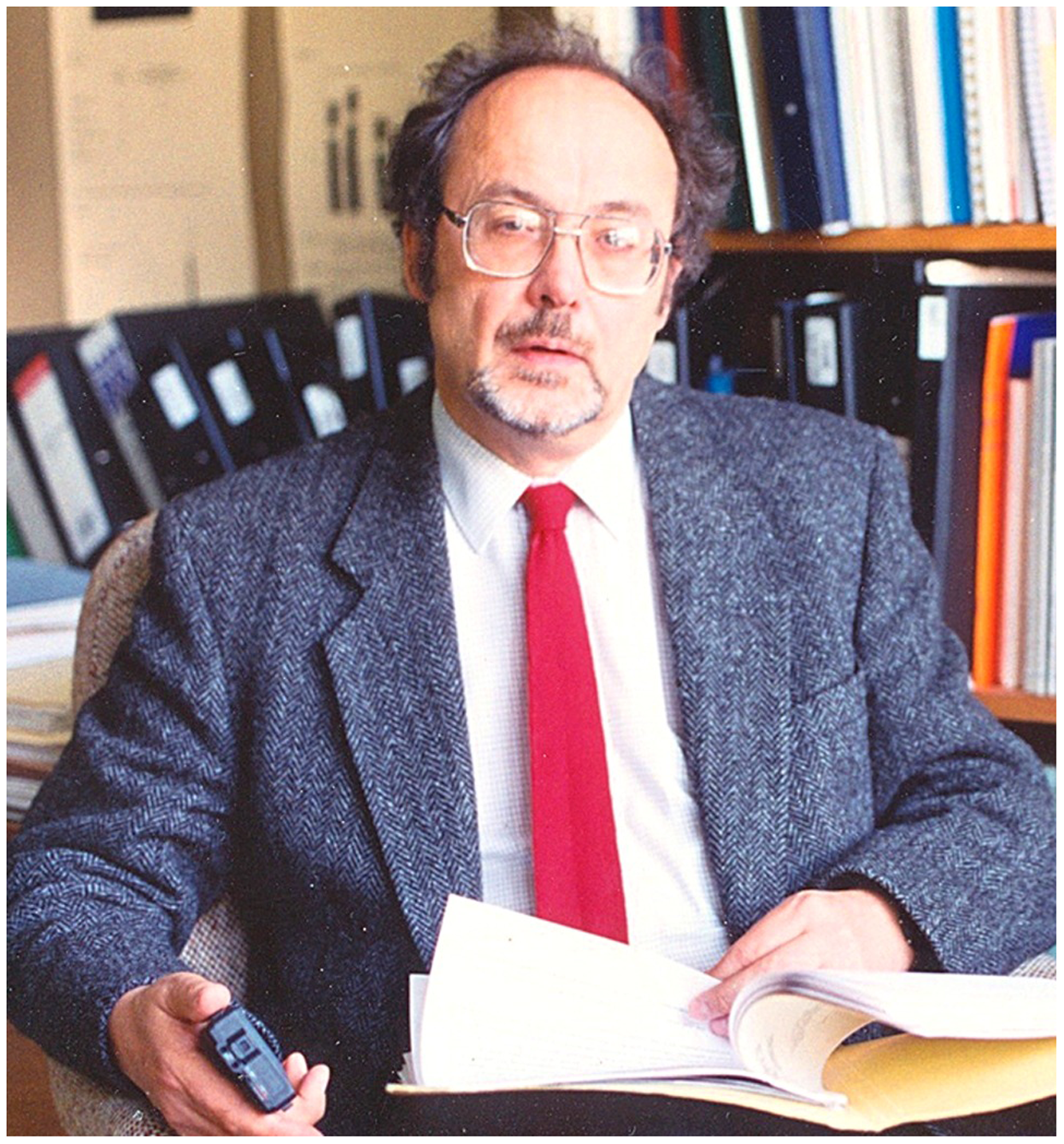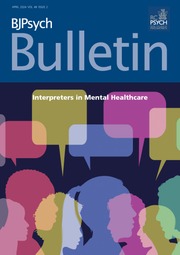Formerly Director, Division of Psychiatry, Clinical Research Centre, Harrow, UK; Professor, University of Oxford, UK; and Honorary Scientific Director, Prince of Wales International Centre for SANE Research, Oxford, UK

Tim Crow, who died on 10 November 2024 after a long and valiant struggle with Parkinson’s disease, was one of the most intellectually gifted psychiatrists of that generation that dared challenge the psychodynamic orthodoxies that had held one of psychiatry’s greatest enigmas, yet most neglected constituencies, so fast for so long – schizophrenia. By substituting speculative psychologising with the rigours of the scientific method, he created a formidable legacy.
Tim, born in London on 7 June 1938, garnered a place at Cambridge to study mechanical engineering but, being of Quaker background, contact with the military during National Service meant hospital auxiliary duties (plus digging latrines!). With a change in direction, he was accepted by the London Hospital Medical College, UK, qualifying in 1964.
What took him to psychiatry was never clear, but it was probably an indefatigable curiosity drawn to ‘big’ questions, and there were none bigger than schizophrenia in the turbulent world of 1960s psychiatry. Six months at London’s Maudsley Hospital, UK, was not to his liking; however, he decided he did not wish to be primarily a ‘doctor’ but a ‘researcher’. In 1966, he and his wife moved north, to Aberdeen, a city with a small university accruing a burgeoning reputation in neuroscience. His PhD on central reward pathways in mammalian brain spawned many collaborations and formed the basis of his neuroscience reputation.
In 1973, Tim moved to David Goldberg’s unit at the University of Manchester, UK, as senior lecturer in psychiatry, though this was to be a brief sojourn, for the Medical Research Council (MRC) had its eye on him.
Under the stewardship of Sir Harold Himsworth, the MRC determined to establish a Clinical Research Centre (CRC), integrated into the next new-build district general hospital, an attempt to maximise the obvious, but untapped, research potential of the National Health Service (NHS). The honour went to Northwick Park Hospital, Harrow, which opened in 1970. The Division of Psychiatry followed in 1974, with Tim as Director, its remit highly specific: investigating biological mechanisms underlying schizophrenia. Still in his mid-30s, he arrived so early in the process that he slept on the yet-to-be-completed research ward as facilities were commissioned around him.
Crow’s social disposition was generally amiable, and he could manage trying patients with a clinically effective calm. He was, however, first and foremost a theoretician, for whom ‘symptoms’ were route maps to the brain, instruments for stimulating research creativity. He had an almost unimaginable grasp of the vast literature of neuroscience, driven – pre-internet – by recall that seemed as sharp and focused as a modern search engine. He could be intolerant of data formulations that he considered intellectually sloppy or timid, for he loved nothing more than a good argument. For him, this was the basis of academic rough-and-tumble, putting ideas ‘out there’ and defending them against contrary proposals – the ‘thesis/antithesis’ out of which a ‘synthesis’ of truth would emerge.
From the mid-1970s to the late 1980s the CRC was world-renowned for schizophrenia research, establishing an agenda that would direct the field for years. The unit was small (two-and-a-half at consultant level, plus junior support – American visitors were often incredulous at its diminutive size). It provided NHS psychiatric services to the citizens of Harrow and an environment for researchers to thrive: Eve Johnstone, Bill Deakin, Nicol Ferrier, Fiona Macmillan, Peter McKenna and others on the clinical side; Chris Frith, Frank Owen, Alan Cross, Mike Joseph, Ros Ridley and others from the basic sciences, and some of the finest laboratory technicians. This core team worked with Tim in pursuit of shared goals, rare in the competitive world of scientific research, but undoubtedly a winning formula. The director of the CRC, Sir Christopher Booth, described Tim as ‘the front man’, a role at which he was outstandingly competent.
As child of the 1960s now living in Thatcher’s world, the CRC started to seem expensive and came under threat – even, to quote Booth, ‘the jewel in the CRC crown’, the Division of Psychiatry. In defence of the Northwick Park model for psychiatry, Tim lobbied tirelessly but the headwinds were blowing too strongly against even his formidable advocacy, and the unit closed in 1994. Tim moved to the University of Oxford, UK, was appointed professor, and later honorary scientific director of the Prince of Wales International Centre for SANE Research, where he remained till retirement.
While in Oxford, Tim returned to the biggest question: why does schizophrenia, a genetically loaded disorder with such poor outcomes, persist with predictable frequency, or occur at all? This interest began in the wake of the CRC unit’s groundbreaking computed tomography study.Reference Johnstone, Crow, Frith, Husband and Kreel1 Tim was intrigued by the lobar asymmetries these transverse scans evidenced, which traditional sagittal and coronal imaging did not. He formulated the hypothesis (grossly simplified here) that schizophrenia is the price our species pays for language.Reference Crow2 Seeing schizophrenia from an evolutionary perspective was novel, and although yet to be validated, it remains a noble scientific legacy in itself.
In 1989, Tim was awarded America’s Lieber Prize for Outstanding Achievement in Schizophrenia Research. Other accolades followed, from the scientific community and an OBE.
I worked with Tim Crow for almost 16 years at Northwick Park, the formative highlights of my career. The unit was a mecca for scientists and psychiatric trainees who passed through its doors, sometimes only briefly, stimulated to discuss, debate and disagree, but always to THINK. Tim’s influence extended to many who went on to till their own furrows with distinction.
Despite a basic diffidence he was a sociable man who enjoyed enormously our unit ‘nights out’, be they to the opera in London or a working men’s club in Luton. His sense of humour was quirky and engaging, best on display in the company of a Doric accent, an arcane appreciation to most born more than 50 yards outside the boundaries of Aberdeen but something that on Tim left lasting memories.
It is ironic that those dopamine systems on which Crow was such an authority were what ultimately let him down, yet even through increasing disability, he never lost his passion for science and those ‘big questions’ he sought to address.
Tim is survived by his wife Julie, a histopathologist, and their children Simon and Louise. His loss will be felt by his wider ‘family’ too – that international community of neuroscientists and psychiatrists on whom his intellect and creativity shone so brightly; and, as importantly, by those directly affected by the crushing enigma that is schizophrenia, to whom his life’s work bequeathed belief in the certainty that, one day, the haystack will yield up its needle.



eLetters
No eLetters have been published for this article.